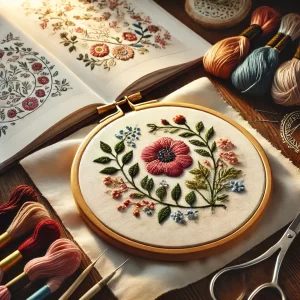Embroidery digitizing is a fun and creative process, but it also comes with its challenges. If you want to create a high-quality, professional-looking embroidery design, following some essential tips and techniques is important. In this blog, we’ll provide a step-by-step guide that’s helpful for both beginners and experienced digitizers.
Step 1: Choosing and Planning the Design
Choosing the right design and planning ahead is crucial. It’s essential to understand that not every design is ideal for embroidery. Highly intricate designs can be challenging to capture accurately in embroidery.
- Choose a Simple and Clean Design – Go for designs that can be effectively rendered in stitches.
- Use a High-Resolution Image as the base to ensure clear details.
- Define Colors and Layers – Decide how many colors and layers you’ll need in advance to avoid confusion later.
Step 2: Selecting the Right Software
There are several embroidery digitizing software programs available in the market. For professional-quality nicedigitizing, here are some commonly used options:
- Wilcom – A professional-grade software with excellent digitizing features.
- Embird – A beginner-friendly and cost-effective software that delivers high-quality results.
- Hatch Embroidery – This software is great for professionals and beginners due to its user-friendly interface and advanced tools.
Step 3: Choosing Stitch Types and Stitch Length
In embroidery digitizing, different stitch types impact the look and feel of the design. Here are some common stitch types:
- Satin Stitch – Ideal for detailed elements like text and borders due to its clean look.
- Fill Stitch – Used for covering large areas with a uniform texture.
- Running Stitch – Suitable for outlines or light detailing, as it doesn’t consume much thread.
Make sure your stitch length isn’t too short (which can increase the risk of thread breakage) or too long (which may distort the design).
Step 4: Using Underlay Stitching
Underlay stitching is a base layer that stabilizes the design on the fabric, making it more durable and giving it a more defined, 3D look. Types of underlay stitches include:
- Edge Run – Often used for satin stitches to provide a strong foundation along the edges.
- Center Run – Works well for fill stitches to stabilize the fabric.
- Zigzag Underlay – Suitable for thick, bold stitches that need extra support.
Step 5: Push and Pull Compensation
In embroidery, the “push” and “pull” effects can cause designs to shrink or stretch. Proper push and pull compensation is essential to make sure the design stays in shape on the fabric.
- Push Compensation – Adjust this for larger areas in the design.
- Pull Compensation – Adjust stitch direction to counteract the pull effect and maintain the design’s integrity.
Step 6: Paying Attention to Colors and Thread Density
- Thread Density – High-density stitches consume more thread and make the fabric heavier, so balancing density is key.
- Color Layering and Combination – When using multiple colors, make sure the layering looks visually appealing.
Step 7: Preview and Test Stitching
After completing the design in the software, always view a virtual preview. Although it may look perfect on-screen, actual stitching can vary. Test stitching is essential to ensure the final result meets your standards.
- Test Sample Stitching – This shows you how the design will look on real fabric.
- Make Adjustments – If something doesn’t look right, make adjustments in the software.
Common Mistakes and How to Avoid Them
- Too Much Detail – Highly detailed designs are harder to translate into embroidery, so try to simplify where possible.
- Thread Breakage – Manage stitch length and density to reduce thread breakage.
- Improper Color Blending – Pay attention to color shades and thread quality for smooth blending.


